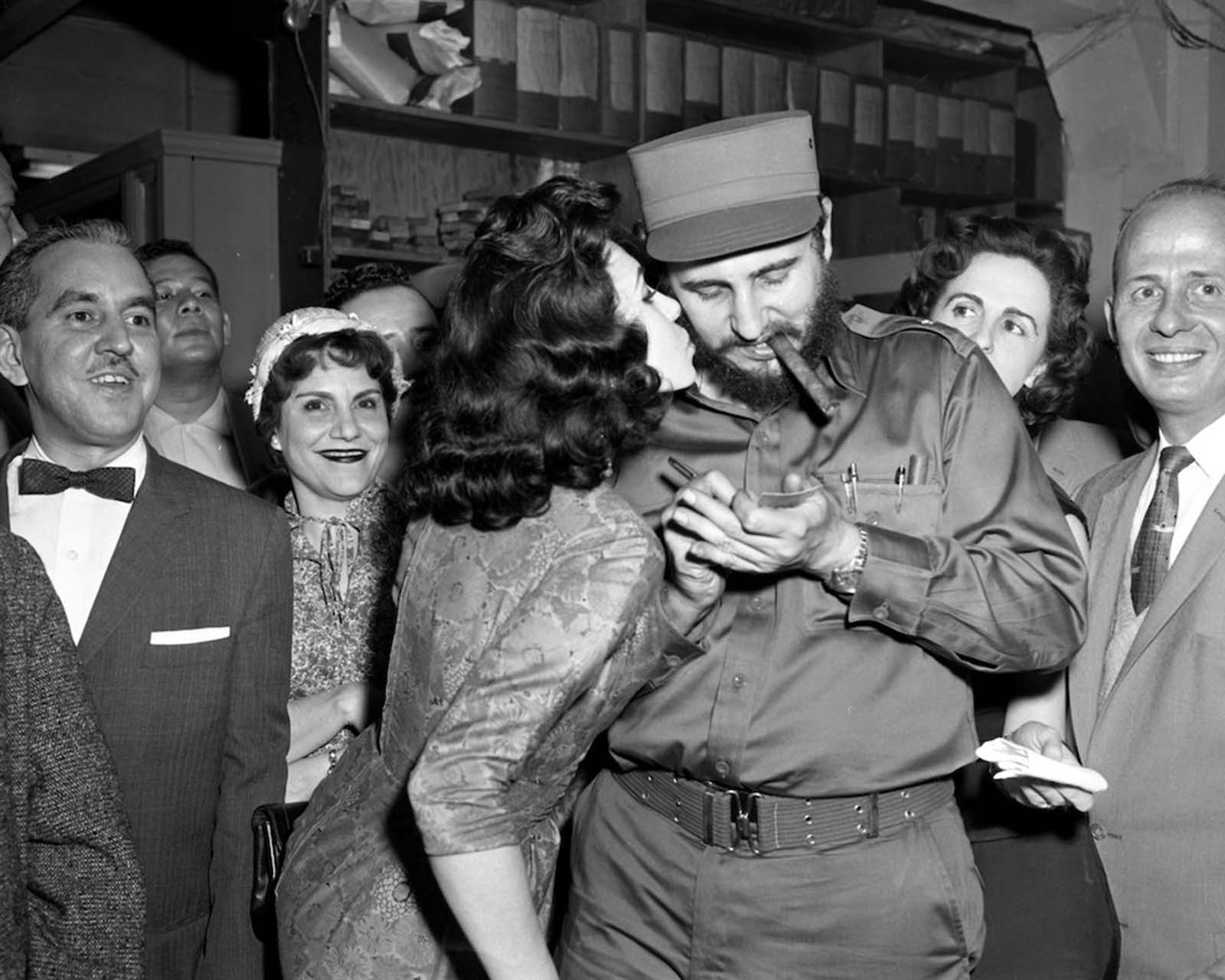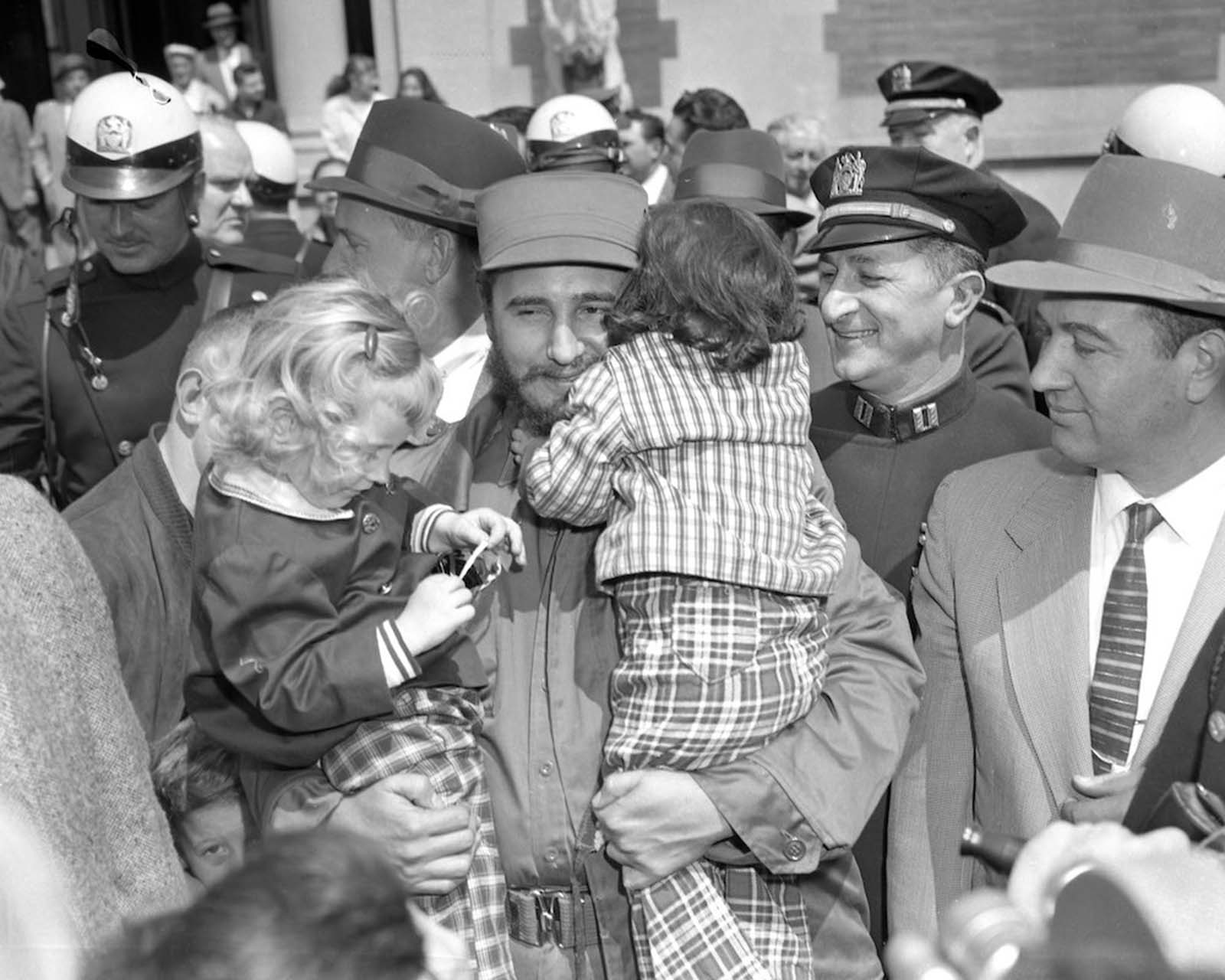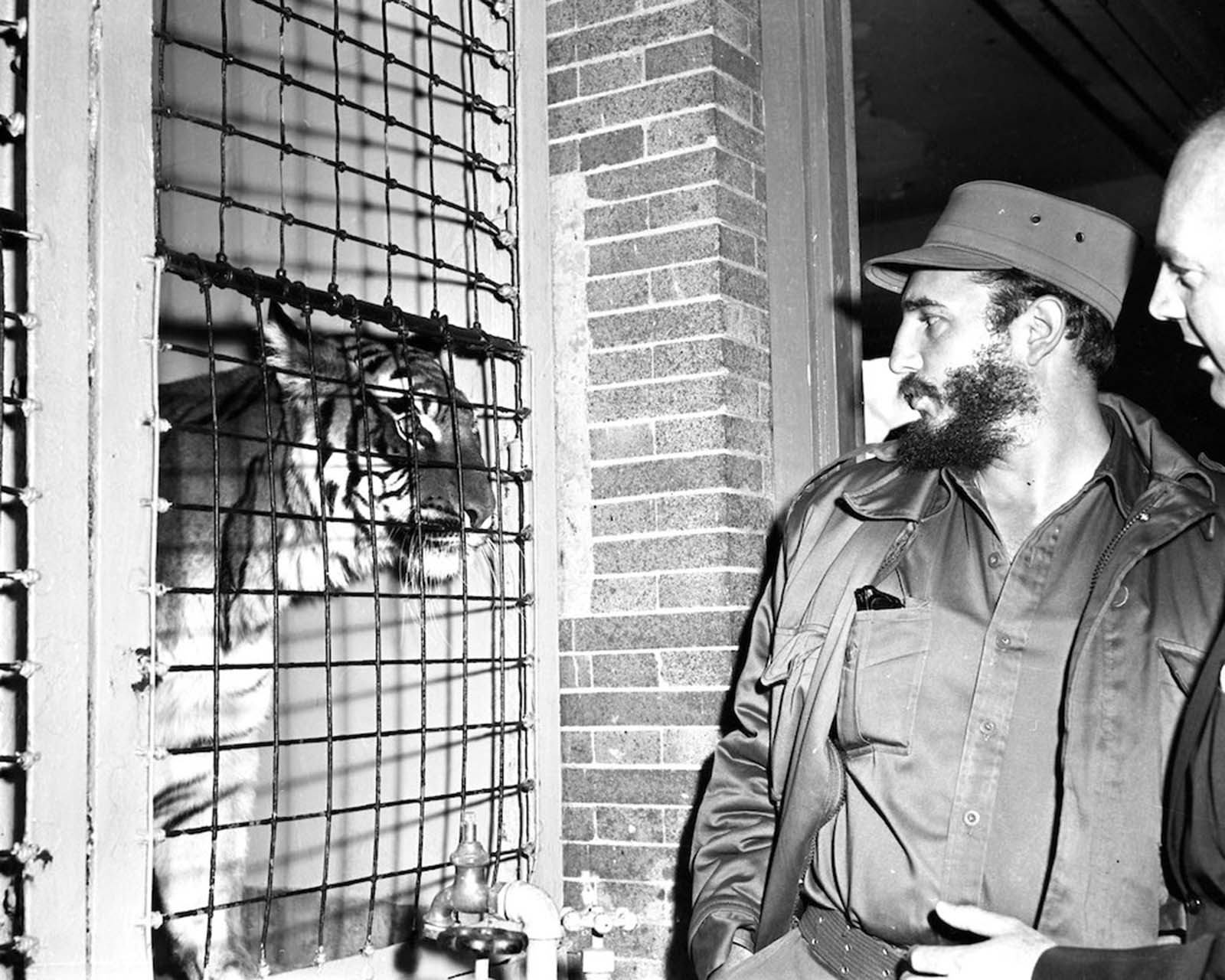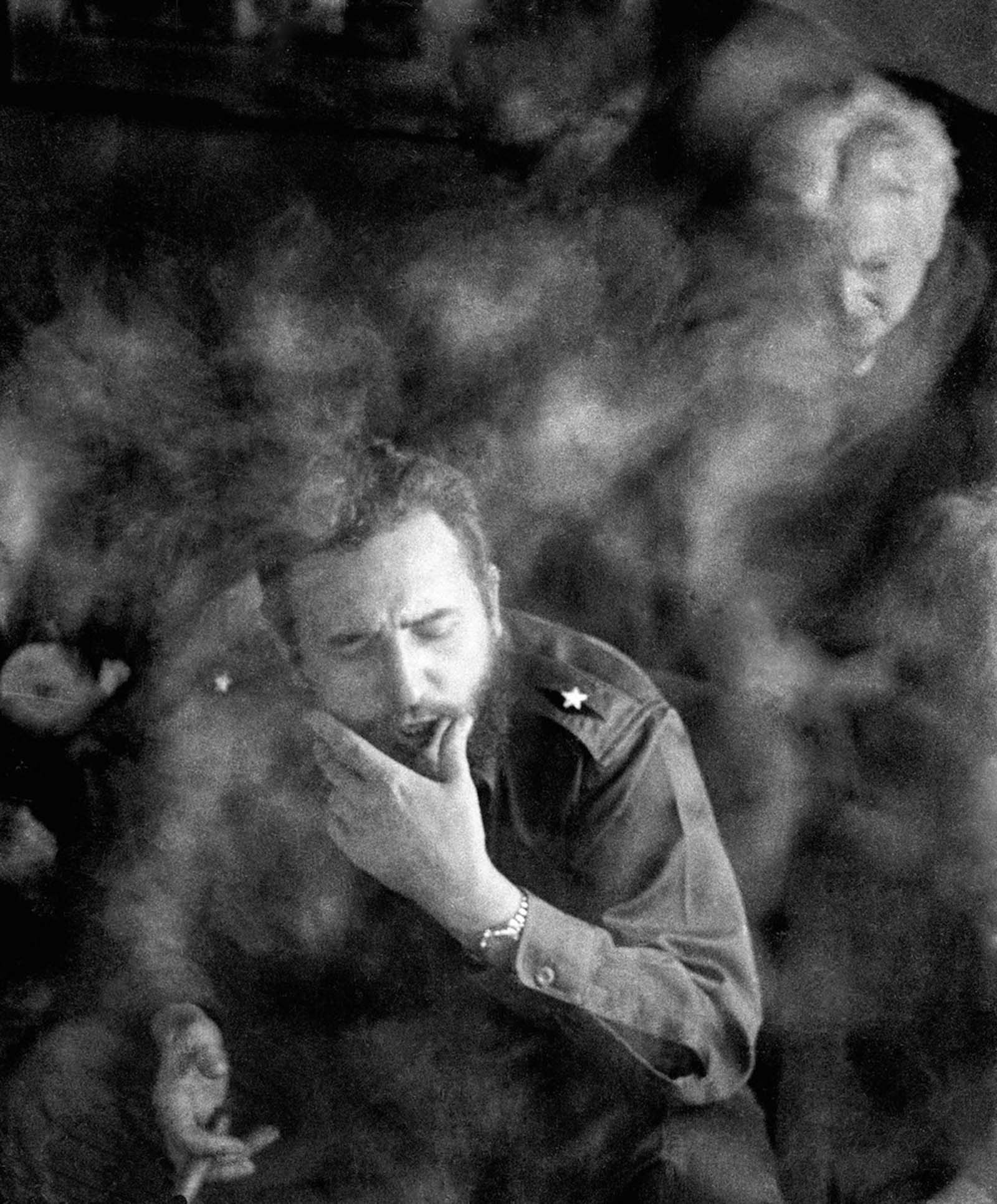Since taking power in January 1959, Castro had infuriated the American government with his policies of nationalizing U.S. companies and investments in Cuba. Some American officials, such as Vice President Richard Nixon, believed that Castro was leaning perilously toward communism. (Castro did not publicly proclaim his adherence to communism until late-1961, when he declared that he was a “Marxist-Leninist”.) The media loved Castro, almost following him around like he was a rock star. He hired a publicist and provided enough photo-ops to keep the press happy. Castro was seen enjoying a hotdog (when in New York, eh?), tossing peanuts to elephants at the Bronx Zoo, hitting and pitching in a charity game of baseball (there was once a rumor that he was good enough to go pro), held babies like a politician, posing with school children wearing fake beards, even taking pictures with his numerous female admirers. This visit was perceived by many as a charm offensive on the part of Castro and his recently initiated government, and his visit included laying a wreath at the Lincoln memorial. After a meeting between Castro and Vice-President Richard Nixon, where Castro outlined his reform plans for Cuba, the U.S. began to impose gradual trade restrictions on the island. On 4 September 1959, Ambassador Bonsal met with Cuban Premier Fidel Castro to express “serious concern at the treatment being given to American private interests in Cuba both agriculture and utilities.” The U.S. stopped buying Cuban sugar and refused to supply its former trading partner with much needed oil, with a devastating effect on the island’s economy, leading to Cuba turning to their newfound trading partner, the Soviet Union, for petroleum. In March 1960, tensions increased when the French freighter La Coubre exploded in Havana Harbor, killing over 75 people. Fidel Castro blamed the United States and compared the incident to the sinking of the Maine, though admitting he could provide no evidence for his accusation. That same month, President Eisenhower quietly authorized the Central Intelligence Agency (CIA) to organize, train, and equip Cuban refugees as a guerrilla force to overthrow Castro. Each time the Cuban government nationalized American citizens properties, the American government took countermeasures, resulting in the prohibition of all exports to Cuba on 19 October 1960. Consequently, Cuba began to consolidate trade relations with the USSR, leading the U.S. to break off all remaining official diplomatic relations. Later that year, U.S. diplomats Edwin L. Sweet and William G. Friedman were arrested and expelled from the island having been charged with “encouraging terrorist acts, granting asylum, financing subversive publications and smuggling weapons”. On 3 January 1961, the U.S. withdrew diplomatic recognition of the Cuban government and closed the embassy in Havana. (Photo credit: NY Daily News Archive / The LIFE Picture Collection / Meyer Liebowitz). Notify me of new posts by email.
Δ Subscribe

















